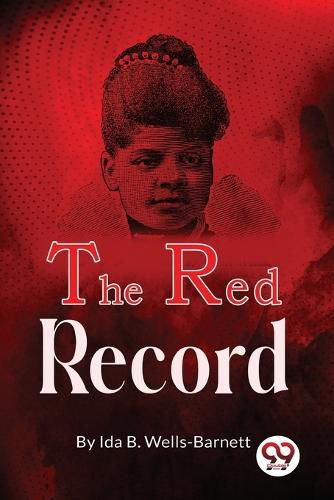Readings Newsletter
Become a Readings Member to make your shopping experience even easier.
Sign in or sign up for free!
You’re not far away from qualifying for FREE standard shipping within Australia
You’ve qualified for FREE standard shipping within Australia
The cart is loading…






This title is printed to order. This book may have been self-published. If so, we cannot guarantee the quality of the content. In the main most books will have gone through the editing process however some may not. We therefore suggest that you be aware of this before ordering this book. If in doubt check either the author or publisher’s details as we are unable to accept any returns unless they are faulty. Please contact us if you have any questions.
The Red Record tabulates these instances of cruelty in clear, impartial figures. Ida B. Wells' original goal for the brochure was to humiliate and shock the lethargic public-and spur change-alongside the total by describing actual instances of lynching and listing the common justifications for these arbitrary executions. The practice of lynching was so pervasive in the postbellum American South that the majority of Southern politicians and leaders chose to ignore it. This lethal brand of vigilante "justice" was really a thinly veiled racist justification for homicidal brutality. With charges ranging from "attempted stock poisoning" to "insulting whites," more than 200 African Americans were killed in 1892 alone. In order to let the dreadful statistics speak for themselves. The anti-lynching movement in the US was led by investigative journalist and activist Ida B. Wells, later Wells-Barnett. A Red Record used mainstream white newspapers to document a resurgence of white mob violence, building on her ground-breaking expose Southern Horrors: Lynch Law in All Its Phases (1892), and discovered that more than 9,000 African Americans had been killed by lynching in the South between 1864 and 1894. The novel aimed to make space for one aspect of a crucial discussion about power, violence, and race in the US.
$9.00 standard shipping within Australia
FREE standard shipping within Australia for orders over $100.00
Express & International shipping calculated at checkout
This title is printed to order. This book may have been self-published. If so, we cannot guarantee the quality of the content. In the main most books will have gone through the editing process however some may not. We therefore suggest that you be aware of this before ordering this book. If in doubt check either the author or publisher’s details as we are unable to accept any returns unless they are faulty. Please contact us if you have any questions.
The Red Record tabulates these instances of cruelty in clear, impartial figures. Ida B. Wells' original goal for the brochure was to humiliate and shock the lethargic public-and spur change-alongside the total by describing actual instances of lynching and listing the common justifications for these arbitrary executions. The practice of lynching was so pervasive in the postbellum American South that the majority of Southern politicians and leaders chose to ignore it. This lethal brand of vigilante "justice" was really a thinly veiled racist justification for homicidal brutality. With charges ranging from "attempted stock poisoning" to "insulting whites," more than 200 African Americans were killed in 1892 alone. In order to let the dreadful statistics speak for themselves. The anti-lynching movement in the US was led by investigative journalist and activist Ida B. Wells, later Wells-Barnett. A Red Record used mainstream white newspapers to document a resurgence of white mob violence, building on her ground-breaking expose Southern Horrors: Lynch Law in All Its Phases (1892), and discovered that more than 9,000 African Americans had been killed by lynching in the South between 1864 and 1894. The novel aimed to make space for one aspect of a crucial discussion about power, violence, and race in the US.